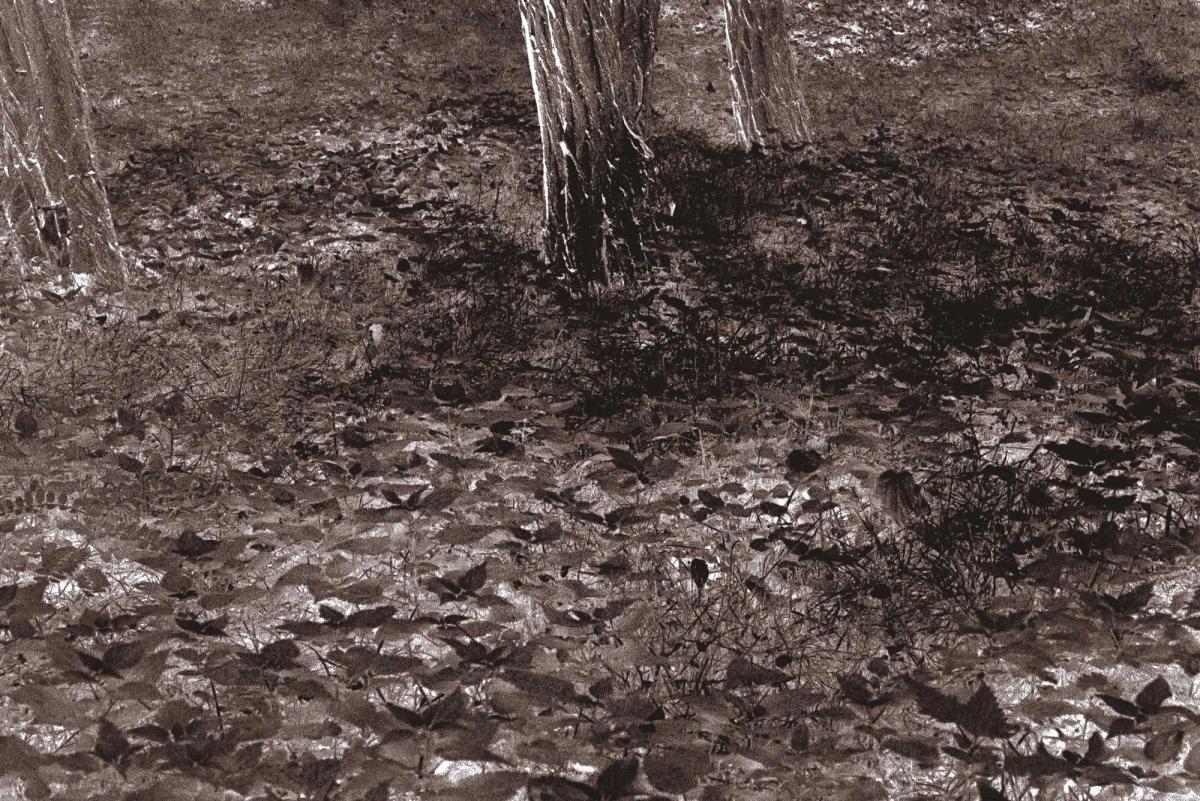They are called the Bloodlands, those countries stretching from the Baltic to northern Romania. The famous book of that title by Timothy D. Snyder estimates that around 14 million civilians died in them at the hands of Hitler and Stalin, but also the local population, with the West barely aware of what was going on. Then those same lands disappeared behind the Iron Curtain for nearly half a century, but now history has returned with a vengeance.
The photographs taken around 1990 by Judy Glickman Lauder of the places of Nazi extermination, always without human beings, are deeply disquieting in themselves and for how they have become relevant to us today. Often, she uses the difficult medium of infrared photography that shows white as black and black as white, creating an image like a ghostly memory that seems more real than a conventional photograph.
Not for nothing does her book of these photos, Beyond the Shadows (Aperture 2018), quote Solomon bar Simeon, who wrote, “Why did the heavens not darken and the stars not withhold their radiance. Why did the sun and moon not turn dark?” after the 1096 massacre of the Jews in Mainz.
“These places are a kind of presence but also the absence of what used to be there,” Glickman Lauder tells The Art Newspaper. “Over three years I was back and forth: so many camps, so many train stations, ghettos, synagogues and cities once populated by Jews who no longer exist.” Her family was all from that area. “My grandmother came to America, probably in the late 1880s. She had a twin sister in Kyiv, who was killed at Babyn Yar [the massacre outside Kyiv of more than 100,000 Jews and non-Jews by the Nazis]. It became kind of a mission for me. I’ve had a lot of exhibitions because I felt that people needed to see, for it’s not just the Nazis. Since World War Two, there have been many holocausts and a lot of ethnic cleansing and it’s going on right at the minute. It’s us human beings. We have to be aware of the evil, of man’s inhumanity to man, and that we can make a difference, with photography playing a role.”
Born in 1938, Glickman Lauder is now one of the US’s finest photographers, with works in more than 20 museums, including the J. Paul Getty and the Metropolitan Museum of Art. She grew up in California, at first learning from her father, who was a medical doctor but also an award-winning photographer with a dark room at home. She still develops her own pictures and likes the fact that people are rediscovering old techniques such as solarisation, cyanotypes and daguerreotypes, but she is not a purist. Of AI-generated images, she says, “Everyone is entitled to do whatever they want, although it’s not my preference or era. It’s all in the eye of the beholder and art is totally subjective.”
From her 20s, she always had a camera on her and also began to collect. She has just given 700 outstanding photos from this collection to the Portland Museum of Art in Maine. Some are very famous, such as the 1986 image by Sebastião Salgado of the Brazilian gold mine, with hundreds of men swarming up from a vast hole in the ground, or the 1945 image by Henri Cartier-Bresson of the woman informer confronted by a seething accuser. Many show the cruel side of humanity and the struggle for racial justice, for Glickman Lauder has a strong social conscience (she and her husband, Leonard Lauder, co-heir to the cosmetics fortune, have given generously to the academic, medical and museum worlds). Nearly all the images are of people, often in melancholy vein, such as the 1957 Avedon of Marilyn Monroe, glamorous as ever, but with the despairing expression of a lost child. Most are black and white and very many are beautiful. Last year Aperture published a selection of them in a book entitled Presence, and the collection has been touring US museums since then, with the next showing at the Norton Museum of Art in West Palm Beach from 2 December 2023 to 10 March, 2024.
Meanwhile, she has gone into colour with her latest works. “I’m trying to capture the shadow of palm trees on the grass,” she says, a purely aesthetic challenge that she may feel is all that is left in the face of so much horror returning to the part of the world she photographed as a warning 30 years ago.


